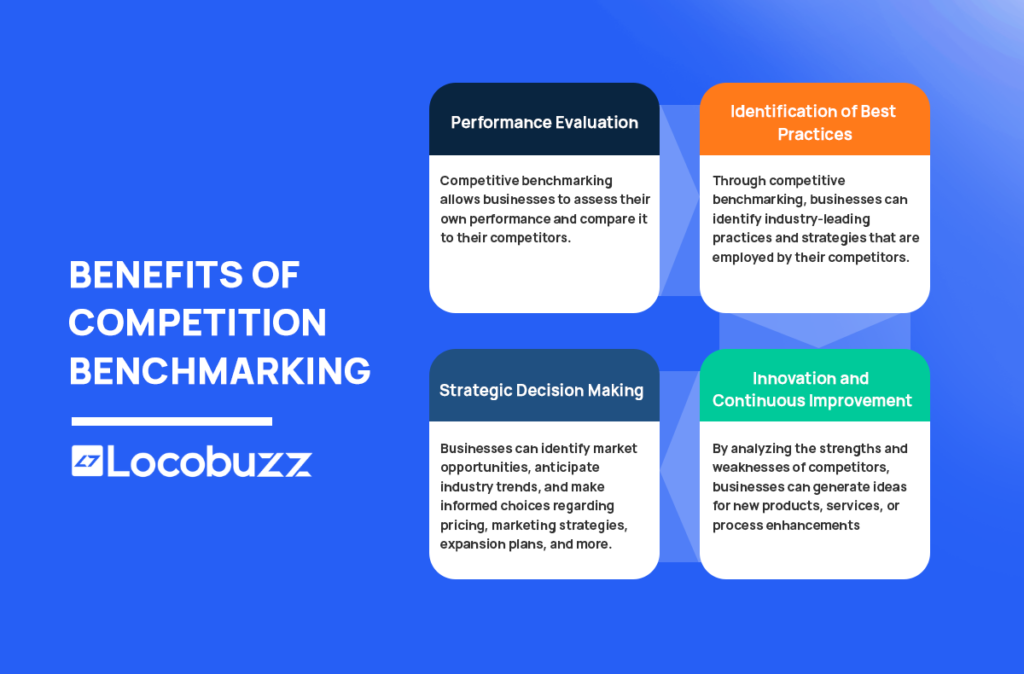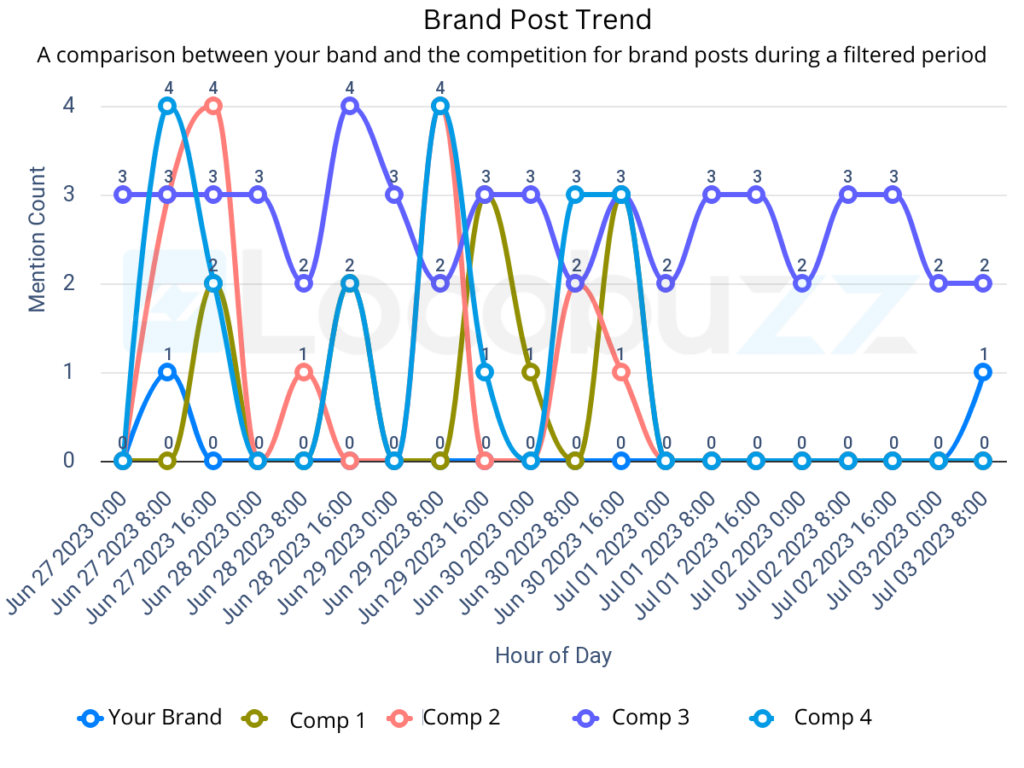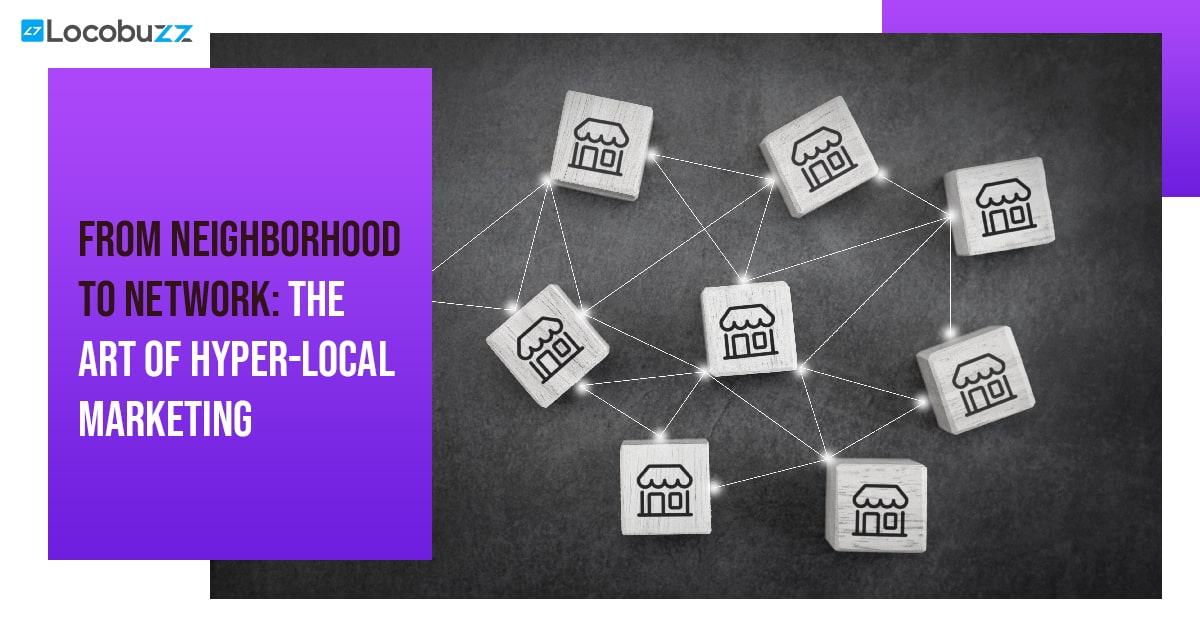What Is Competitive Benchmarking - Benefits, Analysis And How To Do It

Table of Contents
What is competitive benchmarking?
Competitive benchmarking is a strategic process where companies evaluate their products, services and strategies against those of key competitors to identify areas of excellence and potential improvement for gaining a competitive advantage.
The whole idea is to learn from their strengths and dig their weaknesses. Competitive benchmarking analysis is dynamic and subjective to every business and its departments, being as broad or as granular as you like.
3 Types of Competitive Benchmarking include:
- Performance Benchmarking
- Strategic Benchmarking
- Process Benchmarking
Benchmarking against competitors not only provides you with a comprehensive overview of your company status but also ensures that informed business decisions are being taken from your end. This helps businesses retain a strong position in an increasingly competitive landscape. Professional tools like Locobuzz help businesses gather insights to build future strategies.
Why Brands need to have a Competitive Benchmarking tool?

A benchmarking tool provides valuable insights into how your brand compares to competitors across various metrics such as market share, customer satisfaction, pricing, product features, and more.
This information helps you understand your position in the market and identify areas for improvement.
Comparing your brand’s performance against competitors, a benchmarking tool highlights your strengths and weaknesses.
This knowledge enables you to capitalize on your advantages and address any shortcomings to enhance your competitive edge.
Social media metrics provide insights into your brand’s visibility and reach.
Metrics like followers, likes, shares, and comments help you understand how your brand is being perceived and how it compares to your competitors in terms of audience engagement.
Embracing social media analytics as part of your competitive analysis toolkit empowers brands to make informed decisions that drive brand’s success in the digital age.
Example of Competition Benchmarking
Starbucks
 Starbucks, a global coffeehouse chain, faced significant challenges in the late 2000s when the economic recession hit and competition in the coffee industry intensified.
Starbucks, a global coffeehouse chain, faced significant challenges in the late 2000s when the economic recession hit and competition in the coffee industry intensified.
To address these issues, Starbucks embarked on a comprehensive competitive benchmarking initiative to identify areas for improvement and regain its market leadership.
During the benchmarking process, Starbucks analyzed various aspects of its operations, including store layout, customer service, menu offerings, and pricing, among others.
They also examined successful practices of their competitors, particularly those who were gaining traction in the market.
One of the key insights from the benchmarking analysis was that Starbucks had become too focused on expanding rapidly and had lost sight of its core values and customer experience.
They found that their competitors, such as independent coffee shops and smaller chains, excelled in creating a personalized and community-focused environment.
To address this, Starbucks re-evaluated its store design and layout, aiming to create a more welcoming and cozy atmosphere.
They also introduced new customer service initiatives, such as increased training for baristas and a renewed emphasis on connecting with customers.
In addition, Starbucks made changes to its menu by introducing healthier options and expanding its range of beverages to cater to different tastes and dietary preferences.
Through these benchmarking-driven improvements, Starbucks successfully revitalized its brand and regained market share. By focusing on the customer experience and re-establishing its position as a community-oriented coffeehouse, Starbucks was able to differentiate itself from competitors and rebuild customer loyalty.
This example highlights how competitive benchmarking can provide valuable insights into a company’s strengths and weaknesses, enabling them to make strategic improvements to stay ahead of the competition and meet changing market demands.
Competitive Benchmarking vs. Competitive Analysis
Aspect | Competitive Benchmarking | Competitive Analysis |
Focus | Compares performance to specific rivals or industry norms. | In-depth assessment of rivals’ strategies and market positioning. |
Key Areas | Key performance metrics, areas of strength and weakness. | Competitor products, marketing tactics, target audience, pricing. |
Goals | Sets performance goals based on industry benchmarks. | Uncovers opportunities and threats, inform strategic decision-making. |
Outcomes | Insights on market share, customer satisfaction, price, etc. | Insights for product differentiation and strategic choices. |
Approach | Quantitative analysis and data-driven comparisons. | Combination of qualitative and quantitative analysis. |
Application | Used to understand relative performance and operational efficiency. | Used to understand broader market dynamics and competitor strategies. |
Both competitive benchmarking and competitive analysis are valuable tools for understanding and responding to the competitive landscape.
While benchmarking focuses on performance comparisons and goals, competitive analysis provides a more comprehensive view of the competition and their strategies.
Easy 4 step process for competitive benchmarking
1. Goal identification
Getting clarity on what is it that you want your business to achieve? How do you want to utilize competitive benchmarking analysis for your company’s growth? What is to be done after comparing the overall performance or focusing on how your product search compares to a similar feature of your competitors’ websites?
2. Decide on your key business objectives
The Key Objective of the Business should not be messed up, it should be clear. Understand how to generate leads for your products. Identify the key objectives of your brand. This could be sales, getting users to sign up for a newsletter, generating donations, and view ads or contact to arrange a service.
3. Selecting competitors
With competitive benchmarking, there are three competitor groups that can be beneficial to measure your businesses performance:
- Direct Competitors, these are the closest ones. With competitive benchmarking, based on their strengths and weaknesses, studying their size and experience, brands and businesses can make effective decisions and identify immediate opportunities for the near-to-midterm future of your organization
- Biggest players in your industry i.e. the second group. While competitive benchmarking analysis against these household names may seem unsettling, it can help you to evaluate where you want to be, and which process you’d follow to get there. It can identify all common approaches between you and your competitors, as well as highlight areas where you may be weaker for facilitating improvements.
- Smallest companies comprising the third group – These might not be in competition yet. However, these small companies can emerge quickly as they’ve been doing the right things. Using competitive benchmarking you can study their behavior and avoid them from catching you up.
4. Identifying metrics
Suitable metrics are something that businesses need alongside Competitive benchmarking to identify potential competitors. The beauty of using competitive benchmarking analysis is that there is nothing right or wrong in this. It’s flexible and subjective to your own business needs. It lets you select the metrics that would help you, and choose those that can generate the biggest outcomes. Some possible metrics to consider include:
- Audience sentiments
- SERPs visibility and awareness
- Web Traffic
- Marketing objectives and strategies
- Share of voice
- Social reach and engagement
- First Level Response
- Brand Post Trend
Benefits of competitive benchmarking

Competitive benchmarking is a great way to increase your business’s success.
It can help you better understand what the competition is doing and how they are succeeding, it can improve your marketing strategies, and even make your business more efficient.
Benchmarking isn’t just something that big businesses do – anyone with a website or product can benefit from this type of research.
If you’re interested in learning more about competitive benchmarking, read on!
Key Benefits of Competitive benchmarking
- Competitive benchmarking analysis can help you identify threats and opportunities
- Compare your strategy to that of your competitors
- Analyze the possibility of acquisitions or divestitures
- Understand why customers are buying from competitors
- Evaluate how well-known your company is amongst potential prospects
- Complete overview of your competition
- Save time and energy by utilizing a proven process
- Gain competitive advantage against other businesses in the industry
- Inform strategic decisions with meaningful data
What Are Different Types of Benchmarking?
Different types of benchmarking include:
- Internal Benchmarking: Comparing performance and practises across departments or divisions of the same organisation in order to find best practises and areas for development.
- Competitive Benchmarking: Comparing your organization’s performance, products, or services against direct competitors to identify strengths, weaknesses, and areas for competitive advantage.
- Functional Benchmarking: Comparing specific processes or functions of your organization with those of other organizations, regardless of industry, to learn and adopt best practices.
- Process Benchmarking: Comparing specific business processes within your organization with those of other organizations to identify process inefficiencies and implement improvements.
- Strategic Benchmarking: Examining the strategies, goals, and approaches of leading organizations in your industry or related industries to identify innovative practices and gain insights for strategic planning.
- Performance Benchmarking: Comparing performance metrics, such as productivity, quality, or customer satisfaction, with industry standards or best-in-class organizations to measure performance gaps and identify improvement opportunities.
- External Benchmarking: Comparing your organization’s performance, practises, or procedures with those of unrelated organisations acknowledged for excellence in certain areas.
- International Benchmarking: Comparing your organization’s performance or practises to those of organisations in other nations or regions in order to obtain insights into global best practises and change strategy appropriately.
Each type of benchmarking serves a specific purpose and provides unique insights to support continuous improvement and innovation within an organization.
How to choose competitors to benchmark against?
There are a variety of strategies to consider here for competitive benchmarking . Your competition and your relationship with them could be wildly different and so the person you include is contingent on what you hope to achieve.
Competitive benchmarking against your most rival competitors is one possibility.
It is likely to be the ones closest to you in regards to size and performance.
This gives you an accurate overview of the businesses you’re competing directly with and those likely to follow following you.
This is a fantastic option to plan for the future and maximize immediate opportunities.
It is possible to spot your primary competitor’s SEO performance declining in the past few months. It could be a good idea to plan your SEO task to recover the traffic they’ve lost and make sure that does not happen to you.
Naturally, it is possible that you could have greater goals than battling your closest rivals. You could be looking at the largest and most prestigious within your industry and plan to be one of them.
In this case, competitive benchmarking is possible against them and give you a better idea of how you can attain their success.
These numbers may seem like a lot of work initially, but after some study and research, you could discover common strategies among larger corporations, or specific areas that you’re not as strong in comparison to them.
It’s certainly not as easy as doing what the best people do but it can provide you valuable insight into how they function and operate. This also provides a glimpse into how they lay the foundations for their future activities and plans.

There are always smaller businesses taking advantage of others. In a period where disruption is threatening whole industries, it’s an error to not be attentive to the smaller people.
The practice of benchmarking against smaller players is a good idea. This means you will be able to see who’s doing well and what they’re doing.
This way, you’ll be prepared as they become faster and more effective and then catch up. This will help you avoid being caught out of your guard.
The ultimate goal of competitive benchmarking will determine which people to include.
Keep in mind that throwing all of the people, large and small all together could result in your report becoming sloppy.
Do not let the data become obscure and conceal important information from the plain website.
Divide your competitors into separate reports that will meet your desired goals.
Competitive benchmarking & analysis: key methods
A few of the related techniques and methods that are crucial and recommended for effectively managing competitor analysis & benchmarking are:
- Consumer buying behavior
- Customer research & analysis
- Partner analysis
- Macro-environment analysis
- SWOT analysis
Analyze results – Understand how well your product is performing against your competitors. Social Media listening tools will help gather the right data and provide KPIs. However, the bigger picture lies in understanding the trends across sites and the strengths in competing designs. Base your future design decisions on the results of the analysis and avoid the mistakes your competitors made with the designs.
Competitive benchmarking analysis makes sure that you are going on the right way! Well, competitive benchmarking is a way of measuring a company’s performance, processes, strategies against a number of competitors using a set of metrics.

Measure benchmark metrics
Private data is difficult to get access to as businesses are cautious while releasing their data publicly. However, SEO metrics are publicly available, so it is easier to access these metrics.
Businesses are recommended to seek professional help such as data analysts or brand monitoring tools to ensure they have the right information needed to excel in performing competitive benchmarking and generate clear, actionable insights.
Big Businesses and brands these days use complex techniques such as Social Listening to generate a comprehensive dataset. This can help them compare performances, determine where their competitors stand in the market, and create the necessary plan of action.
Locobuzz helps you derive detailed social insights for customers, businesses, brands, and competitors to strategize brand positioning, build engagement, and most importantly gather detailed analysis of the digital ecosystem and competitive landscape.
Traditional Method also involves doing your own research. You can carry out competitive benchmarking surveys and can ask whatever you want for the people of your choice. Do it openly or privately – the choice is yours. The drawback of this method is – it costs businesses time and money.
How can competitive benchmarking go wrong?
A few of the common pitfalls that one must be aware of are:
- Being unclear about your goal and why you are benchmarking
- Failing to not know the right tools and resources that can be utilized
- Competitive benchmarking and competitive analysis isn’t a one-time thing but an ongoing process
- Thinking your competitors are the same. Often you need to opt for out-of-sector benchmarking to be the best in class
- Not taking immediate action. You need to prioritize actions and then cross-check or review if the actions worked or not
The important thing to remember about competitive benchmarking & intelligence is that it’s not just about your competitor’s performance but also, it’s about how you compare to them.
It’s also about how you can turn your insights into actions to best serve your customers.
The key to successful competitive analysis is benchmarking yourself alongside your competitors and identifying wherever the gap is and then showcasing your solution and positioning yourself as a market leader.
Locobuzz: The best a Brand can have for Competition Benchmarking

Locobuzz offers a comprehensive solution for competition benchmarking by allowing you to gain valuable insights into your competitors’ social channels.
With Locobuzz, you can effectively monitor and analyze the presence and performance of your competition, helping you understand how your brand aligns with theirs.
One of the key metrics Locobuzz provides is the engagement rate, which indicates the level of interaction and involvement your competitors have with their audience.
By comparing your brand’s engagement rate with that of your competitors, you can assess the effectiveness of your social media strategies and identify areas for improvement.

Locobuzz also provides data on negative mentions, giving you an understanding of the sentiment surrounding your competitors.
This information allows you to gauge how well your competitors are handling customer concerns and complaints, enabling you to develop strategies to address similar issues and enhance your brand’s reputation.
Another metric Locobuzz offers is the share of voice, which measures the volume of conversations and discussions related to your brand compared to your competitors.
By analyzing the share of voice, you can determine how prominently your brand is being talked about in relation to your competition, helping you identify opportunities for growth and increase your market influence.
Locobuzz also provides mention count and unique user data, allowing you to track the number of times your competitors are being mentioned and the number of individual users contributing to these conversations.
This data provides valuable insights into the reach and impact of your competitors’ social media presence.
With Locobuzz’s smart AI suggest feature, you can receive recommendations for improving your brand based on each mention.
These suggestions help you identify specific areas where your brand needs improvement and provide actionable steps to achieve growth and success.
Locobuzz offers widgets that provide an overall picture of your competitors’ performance and market standing. These widgets give you easy-to-understand visual representations of key metrics, enabling you to quickly assess your competition’s strengths and weaknesses.

In summary, Locobuzz’s competition benchmarking features provide you with a comprehensive understanding of your competitors’ social media presence and performance.
By analyzing engagement rate, negative mentions, share of voice, mention count, and unique users, you can assess your brand’s position in relation to your competition.
The AI-powered suggestions and widgets further enhance your ability to make data-driven decisions and stay ahead in the market.
Final Thoughts
In conclusion, competitive benchmarking is a powerful tool that allows businesses to gain valuable insights from industry leaders and competitors to improve their own performance and stay ahead in the market.
By examining successful practices, identifying areas for improvement, and adapting proven strategies, companies can enhance their products, services, and overall customer experience.
Throughout this blog, we explored real-life brand examples that have leveraged competitive benchmarking to their advantage.
By understanding what the competition is doing well and learning from their successes, companies can fine-tune their strategies, differentiate themselves in the market, and ultimately drive growth and success.
However, it is important to note that competitive benchmarking is not a one-time activity but an ongoing process.
The business landscape is dynamic, and competitors are constantly evolving.
Therefore, organizations must continuously monitor the market, track industry trends, and benchmark against the latest practices to stay relevant and competitive.
Incorporating competitive benchmarking into your business strategy can lead to valuable insights, enhanced decision-making, and improved performance.
By adopting a proactive approach and learning from the best, companies can unlock their true potential and achieve sustainable success in today’s competitive marketplace.
Frequently asked questions
Benchmarking is the process to measure the performance of a company’s products or services against that of other businesses thought to be among the best in its field or industry. The goal in benchmarking is to find internal areas for improvement.
There are 4 different types of benchmaring :
- Internal Benchmarking
- External Benchmarking
- Practice Benchmarking
- Performance Benchmarking
Competitive Benchmarking is very important because it helps a firm to identify their threats & opportunities, keep track of competitors, understand market / customers and hence improve marketing strategy directing towards the success of the business.
Execute Competitive Benchmarking through the following steps :
- Select your competitive benchmark materics.
- Identify your competitors to benchmark against.
- Create the report of competitive metrics.
- Conduct and Measure Results.
- Implement Your Further Strategies.

















